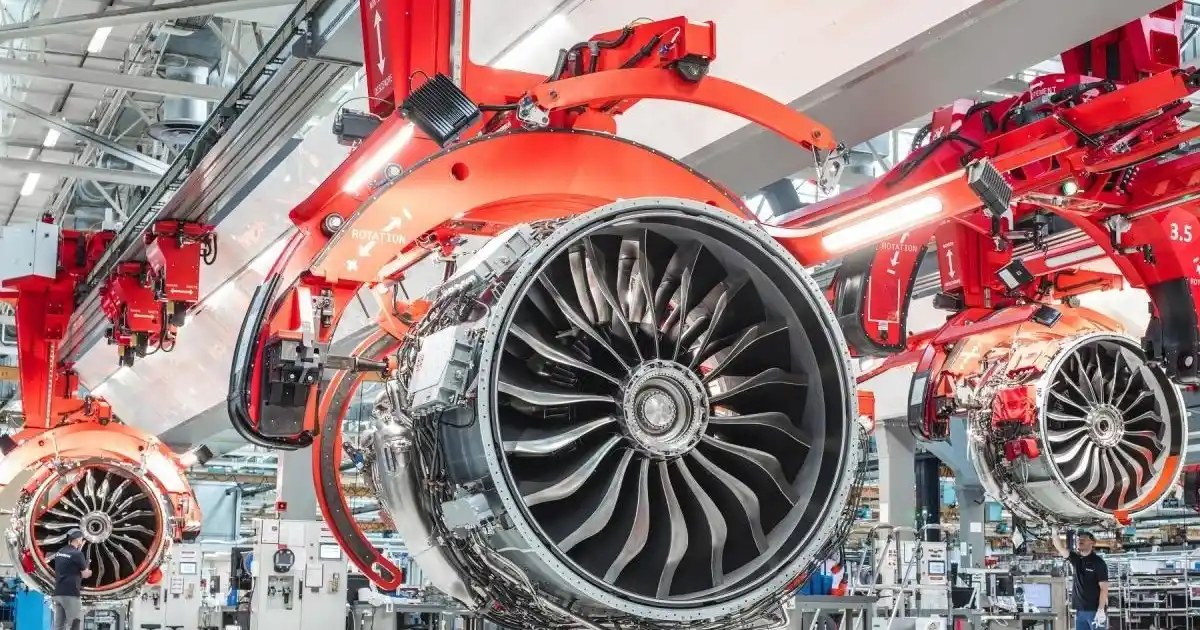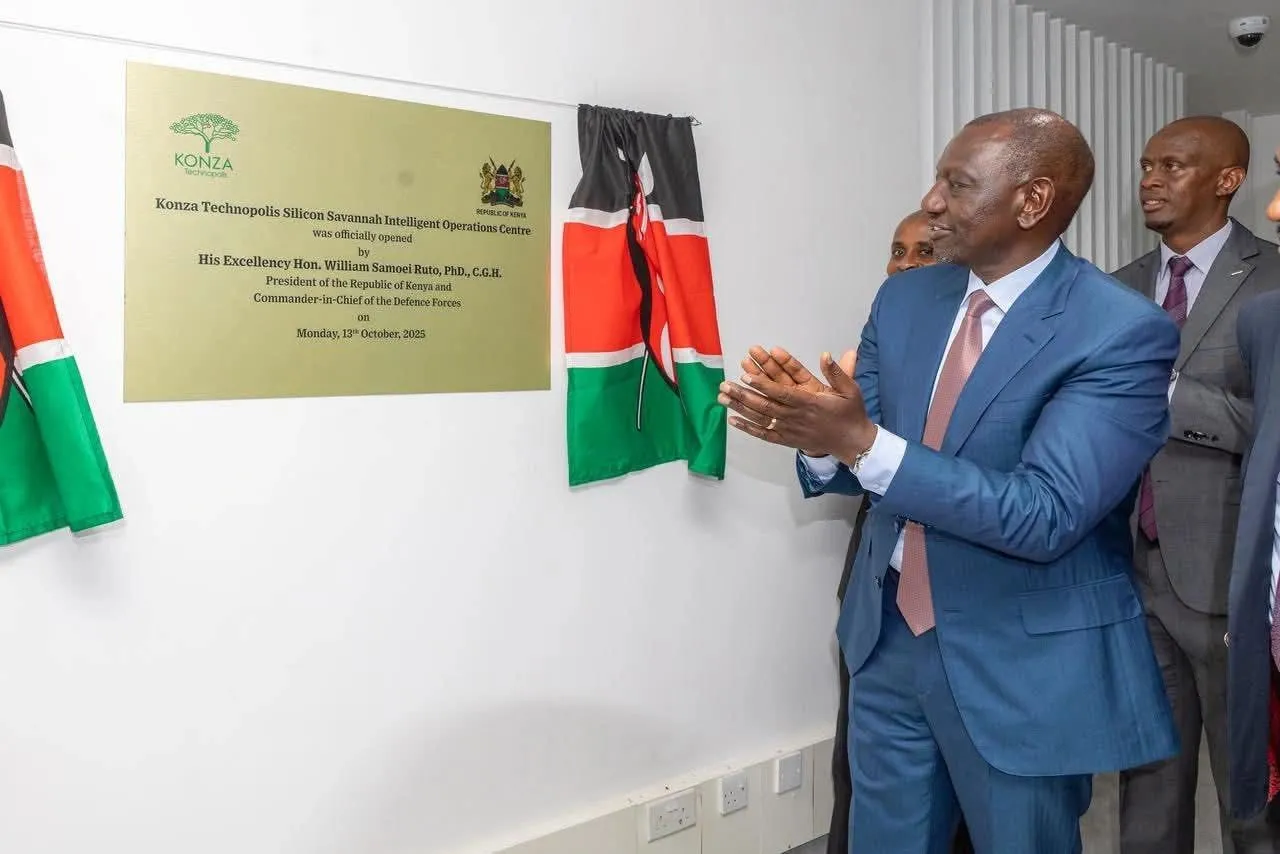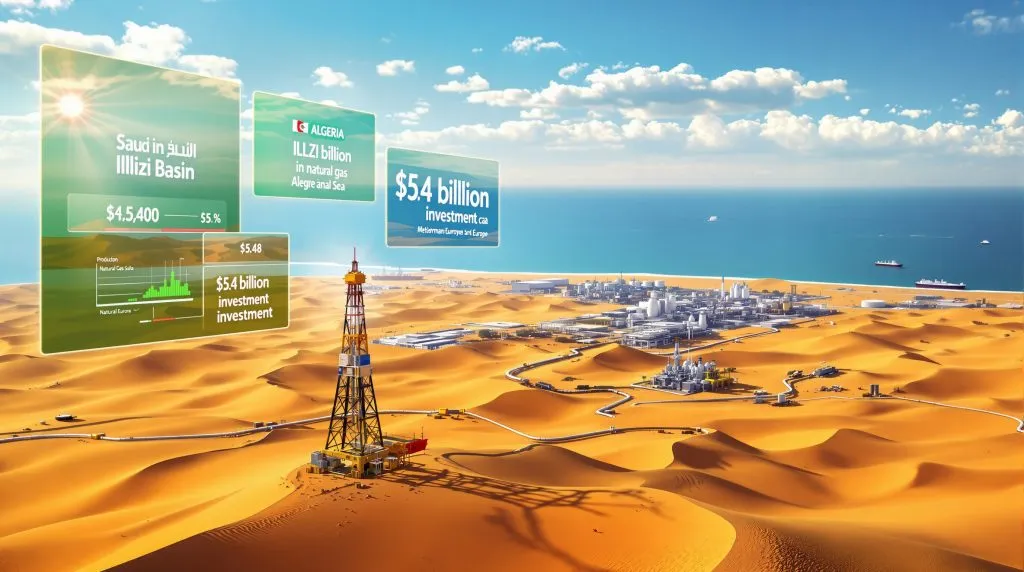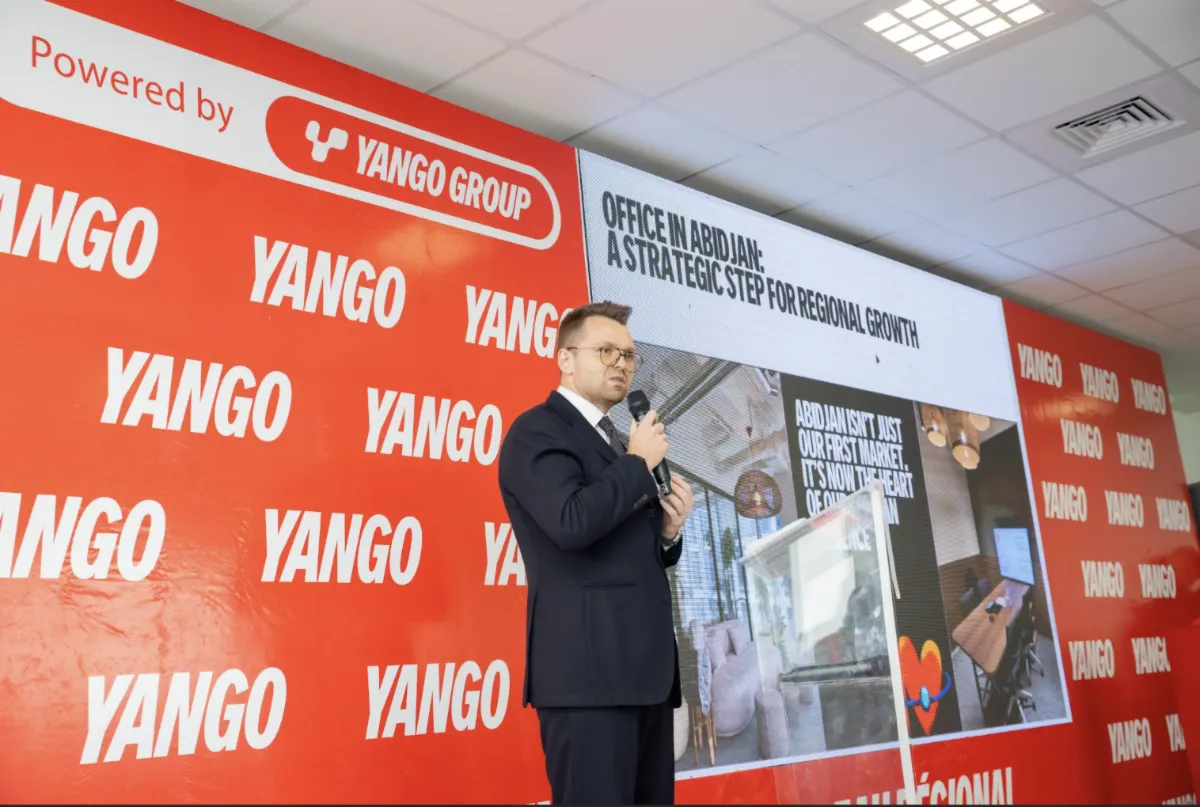In a strategic move that underscores the shifting dynamics of global aerospace manufacturing, French aerospace giant Safran, one of the world’s leading aircraft engine manufacturers, has announced two landmark agreements with Morocco to establish a new engine assembly line for Airbus jets and a comprehensive maintenance and repair facility near Casablanca. The combined investment of €320 million ($371 million) represents one of the largest foreign aerospace investments in Africa and signals Morocco’s emergence as a serious competitor in the global aerospace supply chain.
The announcement, made in October 2025, marks a pivotal moment not just for Safran and Morocco, but for the broader aerospace industry, which has been reassessing its global footprint in the wake of supply chain disruptions, geopolitical tensions, and the need for greater production resilience. As traditional aerospace hubs in Europe and North America face rising costs and capacity constraints, Morocco is positioning itself as an attractive alternative that offers both economic advantages and strategic proximity to major markets.
Build the future you deserve. Get started with our top-tier Online courses: ACCA, HESI A2, ATI TEAS 7, HESI EXIT, NCLEX-RN, NCLEX-PN, and Financial Literacy. Let Serrari Ed guide your path to success. Enroll today.
A Dual Investment Strategy: Production and Maintenance
Safran’s Morocco expansion encompasses two distinct but complementary facilities, each addressing different aspects of the aerospace value chain. The first project involves a €120 million ($139 million) investment to construct a state-of-the-art assembly line dedicated to producing LEAP-1A engines, which power the widely popular Airbus A320neo family of aircraft. This facility is expected to manufacture approximately 350 LEAP-1A engines annually once it reaches full operational capacity, representing roughly a quarter of Safran’s total Airbus-related engine production.
The LEAP engine family, produced through CFM International—a joint venture between Safran Aircraft Engines and GE Aerospace—has become one of the most successful commercial aircraft engines in aviation history. These advanced engines power not only the Airbus A320neo but also the Boeing 737 MAX and China’s COMAC C919, making them critical to the global commercial aviation fleet. The LEAP engines are renowned for their fuel efficiency, reduced emissions, and lower operating costs compared to previous generation engines, factors that have made them the engine of choice for airlines worldwide seeking to modernize their fleets.
The second component of Safran’s Moroccan expansion involves a larger €200 million ($232 million) investment in a dedicated maintenance, repair, and overhaul (MRO) facility. Scheduled to become operational by 2027, this maintenance plant will have the capacity to service approximately 150 engines annually, providing crucial aftermarket support for the growing fleet of LEAP-powered aircraft operating across Europe, Africa, and the Middle East. The MRO facility represents a strategic complement to the assembly line, allowing Safran to offer integrated lifecycle support for its engines while establishing Morocco as a regional hub for aerospace services.
Strategic Rationale: Why Morocco?
Safran CEO Olivier Andriès has been explicit about the factors that made Morocco the preferred location for this significant expansion. In public statements, Andriès highlighted Morocco’s economic stability, skilled workforce, and strategic geographic position as key determinants in the decision-making process. These factors make Morocco an increasingly attractive alternative for European manufacturers seeking to diversify their production footprint while maintaining proximity to major markets.
Economic stability is particularly crucial for aerospace investments, which require long-term planning horizons and sustained capital commitments. Morocco has maintained relatively steady economic growth even during periods of global uncertainty, with prudent fiscal management and ongoing structural reforms that have enhanced the country’s business environment. The kingdom’s political stability, especially when compared to other regions in North Africa and the Middle East, provides the predictability that aerospace manufacturers require when making multi-hundred-million-euro investment decisions.
The availability of a skilled workforce represents another critical factor. Morocco has invested heavily in technical education and vocational training programs specifically designed to support advanced manufacturing sectors. The country’s aerospace training institutes, often developed in partnership with international manufacturers, produce thousands of qualified technicians and engineers annually. Many Moroccan workers have gained experience in the automotive and electronics sectors, providing transferable skills that are valuable in aerospace manufacturing, which demands similar levels of precision, quality control, and process discipline.
Geographic proximity to Europe cannot be overstated as an advantage. Morocco’s location offers same-day shipping access to major European markets, a three-hour time difference that facilitates business coordination, and cultural and linguistic ties to France that ease technology transfer and management integration. For Safran, maintaining engines in Morocco instead of Asia dramatically reduces logistics costs and turnaround times for European airlines needing engine maintenance services.
According to Andriès, the Morocco expansion will significantly improve Safran’s supply chain resilience, a lesson learned from the disruptions experienced during the COVID-19 pandemic and subsequent geopolitical tensions. By diversifying production locations beyond its traditional European base, Safran reduces its vulnerability to localized disruptions, whether from labor disputes, regulatory changes, or other unforeseen events. This geographic diversification strategy mirrors broader trends across the aerospace industry, where manufacturers are increasingly reluctant to concentrate too much production capacity in single locations.
Shifting Production from France’s Villaroche Plant
Until now, Safran’s Villaroche plant located outside Paris has served as the company’s primary production site for Airbus LEAP-1A engines. This historic facility, which has been central to French aerospace manufacturing for decades, currently operates three assembly lines with a combined capacity of approximately 1,000 LEAP-1A engines per year. The Villaroche plant has been integral to Safran’s operations, housing not just production facilities but also significant engineering and testing capabilities.
The decision to establish a second major assembly line in Morocco, capable of producing 350 engines annually, represents a significant shift in Safran’s production strategy. While the company has emphasized that the Morocco facility will complement rather than replace Villaroche, the reallocation of substantial production capacity raises questions about the future evolution of Safran’s European operations. With the Morocco line handling roughly a quarter of total Airbus LEAP-1A production, Safran gains flexibility to optimize its global manufacturing footprint based on cost structures, capacity utilization, and proximity to customers.
This production shift reflects broader challenges facing European manufacturing. Rising labor costs, increasingly stringent environmental regulations, and capacity constraints in mature industrial regions have prompted many manufacturers to seek alternatives. France, while maintaining sophisticated engineering and design capabilities, has struggled to compete on cost with emerging manufacturing hubs in North Africa, Eastern Europe, and Asia. The aerospace industry, traditionally one of France’s industrial crown jewels, must now adapt to these new competitive realities.
However, Safran has been careful to frame the Morocco expansion as additive rather than substitutive, emphasizing that French facilities will continue to play central roles in research, development, and high-value manufacturing. The company’s messaging reflects sensitivity to potential political backlash in France, where concerns about industrial relocation and job losses remain prominent political issues. By maintaining that Villaroche will remain a core facility while Morocco handles capacity expansion, Safran seeks to navigate the delicate balance between economic efficiency and political considerations.
One decision can change your entire career. Take that step with our Online courses in ACCA, HESI A2, ATI TEAS 7, HESI EXIT, NCLEX-RN, NCLEX-PN, and Financial Literacy. Join Serrari Ed and start building your brighter future today.
Morocco’s Aggressive Aerospace Strategy
Morocco’s success in attracting Safran’s investment did not happen by accident. The North African kingdom has implemented a comprehensive strategy to position itself as a global aerospace manufacturing hub, offering generous incentives and developing specialized infrastructure designed to meet the exacting requirements of aerospace production.
The Moroccan government provides financial incentives that can cover up to 30% of capital expenditures for qualifying aerospace investments, significantly reducing the upfront costs for manufacturers establishing facilities in the country. These incentives, combined with competitive labor costs and favorable tax treatment, create an attractive financial proposition for companies evaluating potential expansion locations. Morocco has also invested in developing specialized industrial zones, such as Midparc near Casablanca, where the new Safran facilities will be located.
Midparc and similar aerospace zones offer more than just land and buildings. They provide integrated ecosystems that include customs facilitation, logistics infrastructure, specialized utilities, and proximity to a network of suppliers and service providers. This clustering effect, where related companies locate near each other, generates significant efficiency advantages through knowledge spillovers, shared infrastructure, and reduced transportation costs. Morocco has studied successful aerospace clusters like Toulouse in France and Seattle in the United States, seeking to replicate their advantages in a North African context.
The country’s aerospace sector has already achieved impressive scale. With more than 150 aerospace companies now operating in Morocco, the industry employs approximately 25,000 people, a significant increase from just a few thousand a decade ago. These firms range from Tier 1 suppliers producing major assemblies to smaller companies manufacturing specialized components. The sector’s export value demonstrates its growing significance to Morocco’s economy, with aerospace exports reaching 26 billion dirhams ($2.8 billion) in 2024, up from 21.8 billion dirhams the previous year. This represents year-over-year growth of nearly 20%, far exceeding the growth rates achieved by aerospace sectors in many developed economies.
Parallels with Automotive Success
Morocco’s aerospace ambitions are explicitly modeled on the country’s remarkable success in developing a world-class automotive manufacturing sector. Over the past two decades, Morocco has transformed itself into Africa’s largest automotive producer and a significant exporter to European markets. Major manufacturers including Renault, Peugeot, and Ford have established large-scale production facilities in Morocco, attracted by the same factors now drawing aerospace companies: competitive costs, skilled labor, political stability, and proximity to European markets.
The automotive sector now contributes significantly to Morocco’s GDP and exports, with the country producing over 700,000 vehicles annually and exporting the vast majority to Europe. This success has provided a proven template that Morocco is now applying to aerospace. The government has observed that aerospace manufacturing, while more technically demanding than automotive production, shares many similar requirements: precision manufacturing, complex supply chains, rigorous quality standards, and high-value exports. Morocco’s demonstrated ability to meet these requirements in automotive gives aerospace companies confidence that the country can replicate this success in their industry.
The workforce development programs established for automotive have created a foundation that aerospace can build upon. Many of the technical skills required for automotive manufacturing—precision machining, assembly line operations, quality control processes, and supply chain management—transfer directly to aerospace applications. Morocco’s technical training institutions have expanded their programs to address aerospace-specific requirements, often in partnership with companies like Safran that have committed to developing local talent pipelines.
Growing International Aerospace Presence
Safran is far from alone in betting on Morocco’s aerospace future. The country has successfully attracted a diverse array of international aerospace companies, creating a robust ecosystem that supports everything from component manufacturing to final assembly operations. Global aerospace leaders including Boeing, Bombardier, Hexcel, and Airbus itself have established operations in Morocco, recognizing the country’s potential as a manufacturing and engineering hub.
Royal Air Maroc, the country’s flag carrier and largest airline, has expanded its role beyond passenger and cargo services to become a significant player in aircraft maintenance and technical services. The airline’s engineering division services not only its own fleet but also provides MRO services to other carriers, contributing to Morocco’s reputation as a regional aerospace services hub. Royal Air Maroc’s expansion of its technical capabilities aligns with the broader national strategy of moving up the aerospace value chain from basic manufacturing to higher-value engineering and service activities.
The presence of multiple international aerospace companies creates network effects that further enhance Morocco’s attractiveness. As more companies establish operations, the local supplier base expands and deepens, making it easier for subsequent entrants to find qualified partners for specialized components and services. This clustering dynamic, where the presence of one company makes it more attractive for others to locate nearby, has been a key driver of successful aerospace hubs worldwide.
Morocco’s Industrial Ambitions and Regional Competition
Morocco’s rise as an aerospace manufacturing destination reflects the country’s broader economic transformation strategy. As Africa’s second-largest industrial economy, Morocco has pursued a deliberate policy of industrial upgrading, moving beyond traditional sectors like agriculture and textiles toward higher-value manufacturing and services. The kingdom’s strategic location, bridging Europe and Africa, provides unique advantages for companies seeking to serve multiple markets from a single production base.
However, Morocco faces competition from other emerging aerospace manufacturing locations. Tunisia, despite political challenges, has developed its own aerospace sector with over 80 companies. Eastern European countries like Poland and Romania have attracted aerospace investments with EU membership and competitive labor costs. Further afield, emerging manufacturing powers like Vietnam and Mexico have also positioned themselves as attractive alternatives to traditional aerospace production centers.
What distinguishes Morocco’s approach has been the consistency and comprehensiveness of its industrial strategy. Rather than simply offering tax breaks and cheap labor, Morocco has invested in infrastructure, education, regulatory reform, and diplomatic engagement to create a holistic environment for advanced manufacturing. The country’s free trade agreements with the European Union, United States, and various other partners provide preferential market access that enhances its attractiveness as an export platform.
The Moroccan government has also demonstrated pragmatism in adapting its policies based on investor feedback. When aerospace companies identified regulatory bottlenecks or infrastructure gaps, Moroccan authorities typically responded with targeted reforms or investments. This responsive approach, combined with high-level political commitment to industrial development, has distinguished Morocco from competitors that may offer similar economic fundamentals but lack equivalent policy support.
Implications for Global Aerospace Supply Chains
Safran’s major investment in Morocco carries implications that extend well beyond the two companies involved. The aerospace industry has traditionally concentrated production in a relatively small number of established hubs—Seattle, Toulouse, Hamburg, Montreal—where deep pools of specialized expertise and supplier networks have created self-reinforcing advantages. The emergence of Morocco as a significant aerospace manufacturing location challenges this historical pattern and may accelerate the industry’s geographic diversification.
For airlines and lessors, the expansion of LEAP engine production to Morocco should enhance supply chain resilience and potentially improve delivery schedules. The commercial aerospace industry has struggled with production bottlenecks in recent years, with engine delivery delays frequently constraining aircraft production. By adding significant production capacity in a new location, Safran reduces the risk that disruptions at any single facility could constrain the entire LEAP production system.
For workers and communities in traditional aerospace regions, Morocco’s rise presents more ambiguous implications. While Safran insists that new Moroccan capacity complements existing European facilities, the reality is that aerospace companies now have alternatives when considering where to locate future capacity expansions. This competitive dynamic may pressure wages and working conditions in higher-cost locations while potentially accelerating automation and specialization in advanced engineering tasks that are more difficult to relocate.
For Morocco itself, Safran’s investment represents validation of a long-term industrial strategy and will likely attract additional aerospace investments. Success in aerospace could have positive spillover effects across Morocco’s economy, as the technical capabilities, quality standards, and supply chain sophistication required for aerospace production can be applied to other advanced manufacturing sectors. The multiplier effects from high-value aerospace jobs and exports could contribute significantly to Morocco’s continued economic development.
Looking Ahead: The Future of Aerospace Manufacturing
Safran’s €320 million commitment to Morocco represents more than just a business decision by one company—it symbolizes a broader transformation in global aerospace manufacturing geography. As the industry continues to grow, driven by rising air travel demand particularly in emerging markets, the question of where aircraft and engines should be manufactured is being answered differently than in previous generations.
The COVID-19 pandemic, supply chain disruptions, geopolitical tensions, and climate change pressures have all contributed to a rethinking of global supply chain strategies across industries. Aerospace manufacturers, which previously prioritized efficiency and cost optimization above all else, now place greater emphasis on resilience, diversification, and proximity to end markets. Morocco’s combination of geographic advantages, cost competitiveness, and business environment positions it well to benefit from these strategic shifts.
The success of Safran’s Moroccan operations will be closely watched by other aerospace manufacturers considering similar moves. If the new facilities meet performance, quality, and cost targets, it could trigger additional investments not just by Safran but by competitors seeking to capture similar advantages. Conversely, if the expansion encounters significant operational challenges, it might slow the pace of aerospace diversification toward emerging manufacturing hubs.
What seems certain is that the aerospace manufacturing map will look different in 2030 than it does today. Morocco has positioned itself to claim a significant place on that new map, and Safran’s major investment provides the kingdom with a powerful endorsement of its aerospace ambitions. As the North African nation continues to develop its capabilities and attract investments, it may well achieve its goal of becoming a global aerospace hub, fundamentally reshaping an industry that has traditionally been dominated by a small number of established locations in North America and Western Europe.
For now, the assembly lines and maintenance hangars being constructed near Casablanca stand as monuments to Morocco’s industrial ambitions and the changing geography of global manufacturing. When the first LEAP-1A engines roll off the Moroccan assembly line, they will represent not just remarkable feats of engineering, but also the culmination of decades of strategic planning by a nation determined to claim its place in the global aerospace industry.
Ready to take your career to the next level? Join our Online courses: ACCA, HESI A2, ATI TEAS 7 , HESI EXIT , NCLEX – RN and NCLEX – PN, Financial Literacy!🌟 Dive into a world of opportunities and empower yourself for success. Explore more at Serrari Ed and start your exciting journey today! ✨
Track GDP, Inflation and Central Bank rates for top African markets with Serrari’s comparator tool.
See today’s Treasury bonds and Money market funds movement across financial service providers in Kenya, using Serrari’s comparator tools.
photo source: Google
By: Montel Kamau
Serrari Financial Analyst
14th October, 2025
Article, Financial and News Disclaimer
The Value of a Financial Advisor
While this article offers valuable insights, it is essential to recognize that personal finance can be highly complex and unique to each individual. A financial advisor provides professional expertise and personalized guidance to help you make well-informed decisions tailored to your specific circumstances and goals.
Beyond offering knowledge, a financial advisor serves as a trusted partner to help you stay disciplined, avoid common pitfalls, and remain focused on your long-term objectives. Their perspective and experience can complement your own efforts, enhancing your financial well-being and ensuring a more confident approach to managing your finances.
Disclaimer: This article is for informational purposes only and does not constitute financial advice. Readers are encouraged to consult a licensed financial advisor to obtain guidance specific to their financial situation.
Article and News Disclaimer
The information provided on www.serrarigroup.com is for general informational purposes only. While we strive to keep the information up to date and accurate, we make no representations or warranties of any kind, express or implied, about the completeness, accuracy, reliability, suitability, or availability with respect to the website or the information, products, services, or related graphics contained on the website for any purpose. Any reliance you place on such information is therefore strictly at your own risk.
www.serrarigroup.com is not responsible for any errors or omissions, or for the results obtained from the use of this information. All information on the website is provided on an as-is basis, with no guarantee of completeness, accuracy, timeliness, or of the results obtained from the use of this information, and without warranty of any kind, express or implied, including but not limited to warranties of performance, merchantability, and fitness for a particular purpose.
In no event will www.serrarigroup.com be liable to you or anyone else for any decision made or action taken in reliance on the information provided on the website or for any consequential, special, or similar damages, even if advised of the possibility of such damages.
The articles, news, and information presented on www.serrarigroup.com reflect the opinions of the respective authors and contributors and do not necessarily represent the views of the website or its management. Any views or opinions expressed are solely those of the individual authors and do not represent the website's views or opinions as a whole.
The content on www.serrarigroup.com may include links to external websites, which are provided for convenience and informational purposes only. We have no control over the nature, content, and availability of those sites. The inclusion of any links does not necessarily imply a recommendation or endorsement of the views expressed within them.
Every effort is made to keep the website up and running smoothly. However, www.serrarigroup.com takes no responsibility for, and will not be liable for, the website being temporarily unavailable due to technical issues beyond our control.
Please note that laws, regulations, and information can change rapidly, and we advise you to conduct further research and seek professional advice when necessary.
By using www.serrarigroup.com, you agree to this disclaimer and its terms. If you do not agree with this disclaimer, please do not use the website.
www.serrarigroup.com, reserves the right to update, modify, or remove any part of this disclaimer without prior notice. It is your responsibility to review this disclaimer periodically for changes.
Serrari Group 2025












